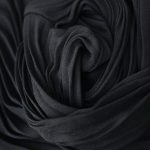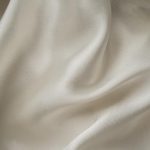Tired of constantly battling lint on your clothes? Ever feel like no matter what you do, it just keeps coming back? Well, fear not! Understanding how fabrics can prevent lint buildup is the key to keeping your clothes looking fresh and lint-free.
By making smart choices in fabric composition, weave, and texture, as well as utilizing effective finishing techniques and controlling static electricity, you can significantly reduce the amount of lint that accumulates on your clothing.
With the right knowledge and strategies, you'll be able to enjoy a wardrobe that stays lint-free for longer periods of time.
Key Takeaways
- Fabrics with higher synthetic fiber content minimize lint buildup.
- Fabrics with tight weaves and smooth textures are less prone to generating or attracting lint.
- Fabric finishing techniques such as singeing, coating, and calendering can reduce lint formation.
- Controlling static electricity in fabrics helps prevent lint accumulation.
Fabric Composition
You can select fabrics with a higher synthetic fiber content to minimize lint buildup. Synthetic fibers like polyester, nylon, and acrylic are known for their durability and ability to retain color, making them less prone to shedding lint compared to natural fibers. Fabrics with a higher percentage of synthetic fibers are less likely to develop pilling, which can contribute to lint formation. Additionally, these synthetic fibers are often smoother and less prone to breakage, further reducing the likelihood of lint accumulation.
When considering fabric composition, it's essential to prioritize durability and color retention. Fabrics with a higher synthetic fiber content not only help prevent lint buildup but also tend to last longer and maintain their original color vibrancy. This makes them a practical choice for garments and household textiles, especially in high-use areas where lint accumulation is a common issue.
Weave and Texture
Understanding how the weave and texture of fabrics can impact lint buildup is essential when selecting textiles for your clothing and home furnishings.
Textile innovation has led to the development of various weave structures and textures that contribute to reducing lint accumulation. Fabrics with tight weaves and smooth textures are less prone to generating or attracting lint.
For instance, fabrics such as tightly woven cotton, polyester, or microfiber exhibit minimal surface irregularities, making it difficult for lint to cling to the material. Additionally, lint prevention techniques such as singeing the fabric, where any protruding fibers are burnt off, contribute to smoother surfaces that hinder lint formation.
When shopping for lint-resistant textiles, consider options with innovative weaves and textures designed to minimize lint buildup, ensuring your clothing and home furnishings maintain a clean and polished appearance. Keep an eye out for fabrics that integrate these advanced textile innovations to effectively combat lint issues and uphold a pristine aesthetic in your living spaces.
Fabric Finishing Techniques
When selecting fabrics to prevent lint buildup, look for innovative finishing techniques that employ processes such as singeing off protruding fibers or applying smooth coatings. These techniques enhance fabric durability and minimize lint production, ensuring that your garments remain in top condition for longer periods.
Here are three key fabric finishing techniques that contribute to lint prevention:
- Singeing: This process involves passing the fabric over an open flame or heated copper plates to burn off any loose fibers, creating a smooth surface that's less prone to lint formation.
- Coating: Applying smooth coatings to fabrics can help reduce lint buildup by creating a barrier that prevents fibers from protruding and shedding. Silicone-based coatings are particularly effective in this regard.
- Calendering: Calendering involves passing the fabric through rollers at high temperatures and pressures to flatten the surface and seal the fibers, reducing the likelihood of lint formation.
Static Electricity Control
To control static electricity and prevent lint buildup, there are several approaches that can be taken during the finishing process. One option is to incorporate anti-static additives into the fabric. These additives enhance the fabric's electrical conductivity, reducing the accumulation of static charges that attract lint. Additionally, surface treatments such as chemical finishes or coatings can be applied to impart anti-static properties to the fabric. These treatments help to mitigate the effects of static electricity.
Another approach involves fiber modification. Conductive materials can be blended with the fabric's fibers, creating a pathway for static charges to dissipate more easily. This modification helps to prevent the buildup of static electricity and reduce the likelihood of lint accumulation.
Lint-Resistant Fabric Types
If you want to minimize lint buildup on your fabrics, it's important to understand the different types of materials that are less prone to collecting lint.
Natural fibers like cotton and wool, as well as synthetic fibers such as polyester and nylon, have varying levels of resistance to lint.
Additionally, the weave and tightness of the fabric, along with specialized finishing techniques, play a crucial role in preventing lint accumulation.
Natural Vs. Synthetic Fibers
Natural fibers are known for their breathability and ability to resist lint buildup, while synthetic fibers are often more prone to collecting lint. When considering lint-resistant fabric types, it's important to understand the differences between natural and synthetic fibers.
Here's what you need to know:
- Natural Fiber Benefits:
- Natural fibers like cotton, wool, and silk are breathable and less likely to attract lint.
- These fibers are comfortable to wear and are often hypoallergenic, making them suitable for sensitive skin.
- They've a luxurious feel and are environmentally friendly, being biodegradable.
- Synthetic Fiber Drawbacks:
- Synthetic fibers such as polyester and nylon tend to accumulate lint due to their static charge.
- These fibers may not be as breathable and can cause discomfort during extended wear.
- They're often non-biodegradable, contributing to environmental concerns.
Understanding these differences can help you choose the most suitable fabric for your needs, whether it's for clothing, upholstery, or linens.
Weave and Tightness
Choose a tightly woven fabric to minimize lint buildup and keep your garments looking clean and fresh. Fabrics with a higher thread count tend to be more durable and less prone to shedding fibers, resulting in reduced lint accumulation.
Look for materials like cotton, polyester, or blends with a tight weave, as these are less likely to produce lint. Additionally, tightly woven fabrics can offer better breathability and moisture-wicking properties, keeping you comfortable while minimizing the risk of lint formation.
When shopping for lint-resistant fabrics, consider the weave and tightness to ensure that your clothing remains free from unsightly lint, maintaining a polished appearance and promoting longevity.
Specialized Finishing Techniques
When looking for fabrics that prevent lint buildup, consider garments treated with specialized finishing techniques for a longer-lasting, lint-resistant quality. Here are three key fabric innovation and textile technology approaches that aid in anti-lint treatments:
- Nano Coatings: Utilizing nanotechnology, fabrics are coated with nano-sized particles that create a barrier, preventing lint from adhering to the surface. This technique not only repels lint but also enhances the fabric's durability and sustainability.
- Electrostatic Treatment: Fabrics are treated with a specialized finish that generates an electrostatic charge, repelling lint and preventing it from clinging to the material.
- Silicone Finishes: Applying silicone-based treatments to fabrics creates a smooth surface that resists lint buildup, making it easier to remove any stray fibers.
These advanced finishing techniques showcase the intersection of fabric innovation, sustainability, and textile technology in creating lint-resistant fabrics.
Maintenance and Care Tips
Taking care of your fabrics is essential for preventing lint buildup. From choosing the right fabric types to using lint-repelling techniques, there are many ways to keep your clothes and linens looking their best.
Simple washing and drying tips can also make a big difference in reducing lint accumulation.
Fabric Types and Lint
You can reduce lint buildup on different fabric types by regularly cleaning and maintaining them according to their specific care instructions. When it comes to fabric selection and lint prevention, keep these tips in mind:
- Natural Fabrics: Fabrics like cotton and linen are prone to lint due to their fibers. To minimize lint, avoid washing them with items that produce a lot of lint, such as towels or fuzzy sweaters.
- Synthetic Fabrics: Polyester and nylon tend to attract lint. To prevent buildup, wash these fabrics separately from lint-producing items and use a lint roller or tape to remove any lint.
- Specialty Fabrics: Delicate fabrics like silk or wool require extra care. Handwashing or using a gentle cycle can help minimize lint, and air drying can prevent fabric damage caused by heat.
Lint-Repelling Techniques
To effectively maintain lint-free fabrics, regularly apply lint-repelling techniques and follow specific care tips based on the fabric type. Lint prevention can be achieved through simple household items and proper fabric selection, considering the environmental impact. Here are some maintenance and care tips to help you keep your fabrics free from lint buildup:
| Lint-Repelling Techniques | Household Items | Environmental Impact |
|---|---|---|
| Gentle washing | Lint roller | Eco-friendly detergents |
| Air drying | Fabric shaver | Energy-efficient appliances |
| Regular vacuuming | Microfiber cloths | Natural fiber fabrics |
| Avoiding over-drying | Fabric softener alternatives | Biodegradable packaging |
Washing and Drying Tips
Incorporating gentle washing and air drying into your fabric care routine can significantly reduce lint buildup and preserve the fabric's quality. To maintain your fabric and prevent lint buildup, consider these tips:
- Avoid Fabric Softeners and Dryer Sheets: While these products may make your clothes feel softer, they can leave a residue on the fabric, leading to lint accumulation.
- Opt for Air Drying: Whenever possible, air dry your fabrics to minimize friction and reduce the chances of lint formation.
- Use Proper Ironing Techniques: When ironing, ensure that your iron is clean and set to the appropriate temperature for the fabric to prevent damage and lint transfer.
Practical Applications
By using proper care and maintenance, you can effectively reduce lint buildup in fabrics. Fabric innovation and technology have led to the development of materials that are less prone to shedding lint. Look for garments made from innovative fabrics such as microfiber, modal, or Tencel, as these materials are engineered to be more resistant to pilling and lint formation.
Manufacturers are also increasingly incorporating sustainable practices into fabric production, which can positively impact the environment and reduce lint shedding. When selecting clothing or linens, consider the environmental impact and sustainability of the materials used.
In addition, proper laundering techniques, such as using a gentle cycle and avoiding overloading the washing machine, can help preserve the fabric's integrity and reduce lint accumulation.
Incorporating these practical applications into your fabric care routine can contribute to minimizing lint buildup and prolonging the life of your textiles.
Frequently Asked Questions
Can Fabrics With a Higher Thread Count Prevent Lint Buildup Better Than Fabrics With a Lower Thread Count?
Fabrics with a higher thread count can prevent lint buildup better than those with a lower count. The tight weave reduces loose fibers, decreasing lint. Proper care is also essential for maintaining fabric performance and preventing lint.
Are There Any Specific Laundry Detergents or Fabric Softeners That Can Help Reduce Lint Buildup on Fabrics?
To reduce lint buildup on fabrics, use laundry detergents and fabric softeners that prevent static electricity. Proper fabric care and using these products will help keep your clothes and linens lint-free.
Can Wearing Certain Types of Clothing, Such as Wool or Synthetic Fabrics, Contribute to Lint Buildup on Other Fabrics?
Wearing certain fabrics, like wool or synthetics, can contribute to lint buildup on other clothes. To prevent this, consider fabric choice and practice good garment care to reduce static and lint.
Are There Any Natural Remedies or DIY Solutions for Preventing Lint Buildup on Fabrics?
To prevent lint buildup on fabrics, consider natural remedies and DIY solutions like using vinegar in the rinse cycle or reducing fabric thread count. Choose clothing types and laundry products that minimize lint. Climate impact can also influence preventative measures.
Is Lint Buildup More Likely to Occur in Certain Climates or Environments, and Are There Any Preventative Measures for These Situations?
In certain climates or environments, lint buildup can be more likely due to humidity. To prevent this, consider using lint-resistant fabrics, maintaining proper fabric care, and controlling environmental factors like humidity levels.







